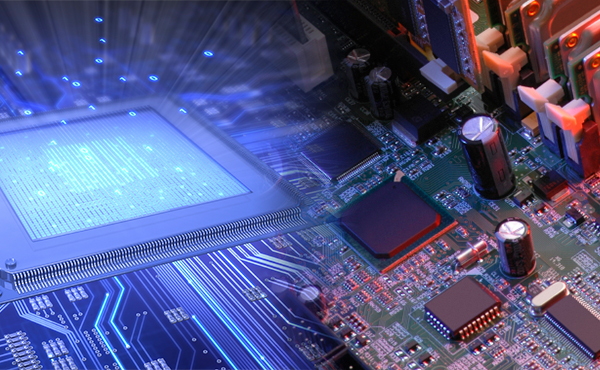Ever since the launch of Raspberry Pi, single board computers have become more and more popular. Now, boards are available for a range of prices and purposes, from cheap boards to fully functional single boards that can replace a desktop PC.
Single board computers have numerous uses, but they’re often found in industrial applications all over the world to support IoT networks. Cloud-based data centers are vital to the processing and storage of data for IoT devices, especially on an industrial scale, but relying solely on the cloud comes with its challenges, including latency between the cloud and the devices on the edge of the network.
For mission-critical tasks, such as process and motion control, this latency can significantly impact vital functions. In addition, the data transit at high volume can stress communications resources and exposes sensitive information to hackers.
Ready-to-Use Single Board Computer (SBC) Platform that Enables Businesses to Manage Data in Real Time to Increase Operational Efficiency Share on X
One solution to this is edge processing, which processes, filters, and analyzes data on the edge of the network. Computing platforms based on single board computers enhance edge computing and offer cost-effective and reliable solutions to improve operational efficiency.
Businesses can adopt a ready-to-use single board computer platform to manage data in real time, depending on the features chosen.

What is a Single Board Computer?
A single board computer (SBC), such as the NXP i.MX 8, is a complete computer that’s built onto a single circuit board and fully equipped with memory, microprocessors, input/output, and other features that give it the functionality of a conventional computer. SBCs are typically about the size of a credit card or slightly larger.
SBCs can do just about anything a traditional desktop or laptop can, but it depends on the processing power and components. For the basic DIY designer, this capability it more than enough. For more advanced applications, SBCs can be purpose-built and configured.
A lot of this has to do with the ever more powerful processors on the market. Configured with custom architectures, these processors offer stunning performance that, combined with 1GB DDR3 RAM, 2GB flash storage, USB ports, LAN ports, HDMI/AV ports, and other peripherals, it becomes a single board computer. From there, it only needs to be connected to a display and it’s booted into an operating system (typically Linux, though Android is available).
IoT projects are popular for developer boards, including VPN servers, smart home hubs, and ad blocking. SBCs are also popular for robotics work and AI. The only limiting factor to SBCs is what a single board and designer can do, not what they can do on a whole.
SBCs are commonly used for development systems, embedded computer controllers, or educational systems. They’re frequently used in industrial situations in a rackmount format for process control, or embedded for control and interfacing.
Some examples of SBCs in practice include the Ariane and Pegasus rockets, the Space Shuttle, and the ALICE deep sea probe. On the consumer level, SBCs are popular because they’re lightweight and purpose-built, making them suitable for tablets, smartphones, gaming consoles, and other consumer devices.
Benefits of SBCs
SBCs were made possible by increasing the density of integrated circuits. These computers can reduce the system’s total cost, due to fewer circuit boards, and by eliminating unnecessary components like bus driver circuits. They’re also less powerful than a full computer and dissipate less heat, consuming less power.
Portability is another major feature of the SBC, and one of the main drivers of SBCs in consumer electronics. The SBC is lightweight and portable, allowing it to be used in small devices for consumers. On the industrial level, this means more space saved without sacrificing necessary computing power and performance.
Due to the high levels of integration, reduced connectors, and reduced or eliminated components, SBCs, like the i.MX 6 board, are usually smaller and more power-efficient than multi-board computers. With all the functions on one board, an SBC allows a smaller overall system and no connectors, which can be a source of reliability concerns.
For IoT applications, the flexibility with SBCs is unmatched. Designers can create a platform by choosing only the functionality needed in the present without sacrificing the ability to scale in the future. With a purpose-built, multi-board system, the entire platform may need to be replaced as the operations scale.
Along with this, designers gain an in-depth understanding of the system and its components, which is essential for scaling future computing resources and minimizing downtime.
The flexibility of the SBCs themselves is also valuable for industrial uses. Complex systems, such as those for aerospace systems, may use SBCs with 3U or 6U form factors and the Open VPX standard. These SBCs typically have upscale processes and field programmable gate arrays (FPGAs) to process small samples faster than graphic processing units (GPUs). These features may be more expensive, however.
DIY SBCs are prominent on the market as well, due to the ease-of-use of SBCs in general. These are less expensive, but allow sensors to connect for a moderate processing capability. Once the data is processed, the insights can be sent to an onsite or edge computer platform based on SBCs. This allows a cluster of edge sensor devices to perform analytics at the edge and inform decision-making processes.
SBCs have a “middle ground” for industrial applications. Equipped with Intel Core processors, these can deliver a level of performance equivalent to a middle-ground laptop and can be configured with memory by the designer.
SBCs come with a variety of additional features, including gigabit ethernet, low-voltage differential signaling, support for SPI and SPX, audio and video inputs and outputs, and multi-layer security on a Trusted Platform Module (TPM). These are almost entirely configurable, especially with prototyping kits and development boards.
Ready-to-use SBCs based on open architecture can be integrated into existing solutions to overcome deployment challenges and reduce infrastructure costs. Designers can begin with the basic functionality and assume the need for additional performance components will increase.
Limits to SBCs
SBCs pack a lot of power and capability in a small package, but there are still limits to what can be accomplished with one board. More complex applications may require more complex boards, and that’s where SBC clusters come in.
Clusters of SBCs include one or more SBCs, creating a micro supercomputer. These clusters can support multiple nodes with incredible memory and storage capability, yet still smaller than a PC.
Just like scaling a sole SBC, clusters of SBCs can be built upon with different architectures to create powerful configurations for IoT applications. Unlike large, traditional clusters, SBC clusters are small, cost-effective, and consume minimal power, making them ideal for edge computing.
Finally, SBC clusters can deliver exceptional performance using ready-to-use, off-the-shelf SBCs with the right components.
Meeting the Demands of IoT
As industrial IoT becomes more powerful and prominent, businesses and designers face considerable challenges in processing high volumes of data without latency, security risks, and network congestion. SBCs designed for IoT applications can offer powerful and purpose-built solutions for edge computing platforms, bringing the data processing and analytics to the edge to reduce the issues with central cloud-based storage. When combined with the right components, SBCs or SBC clusters can be tailored to the necessary solutions and scaled as demands grow, addressing the needs of modern operating environments.
Recommended Read:
TOP 6 DIGITAL MARKETING COURSES THAT WILL PREPARE YOU FOR A SUCCESSFUL CAREER IN 2022
5 BEST SOCIAL MEDIA ANALYTICS TOOLS FOR MARKETERS IN 2022
AMAZING TRICKS TO INCREASE SUBSCRIBERS AND VIEWS ON YOUTUBE IN 2022
General FAQs
A Single-Board Computer (SBC) is a complete, functioning computer in which the microprocessor, input/output functions, memory, and other features are all built on a singe circuit board, with RAM built in at a pre-determined amount and with no expansion slots for peripherals.
Some of them include Raspberry Pi, The Beagles (BeagleBoard, BeagleBoard xM, BeagleBone, BeagleBone Black), PandaBoard, MK802, MK808, Cubieboard, MarsBoard, Hackberry, Udoo, etc.
Unlike a modern desktop computer, an SBC doesn’t need additional memory or storage in order to boot. A single board computer can’t do many of the things that a modern high-performance PC does. But then, it doesn’t try. Instead, SBCs serve in a range of educational, commercial and industrial applications.




